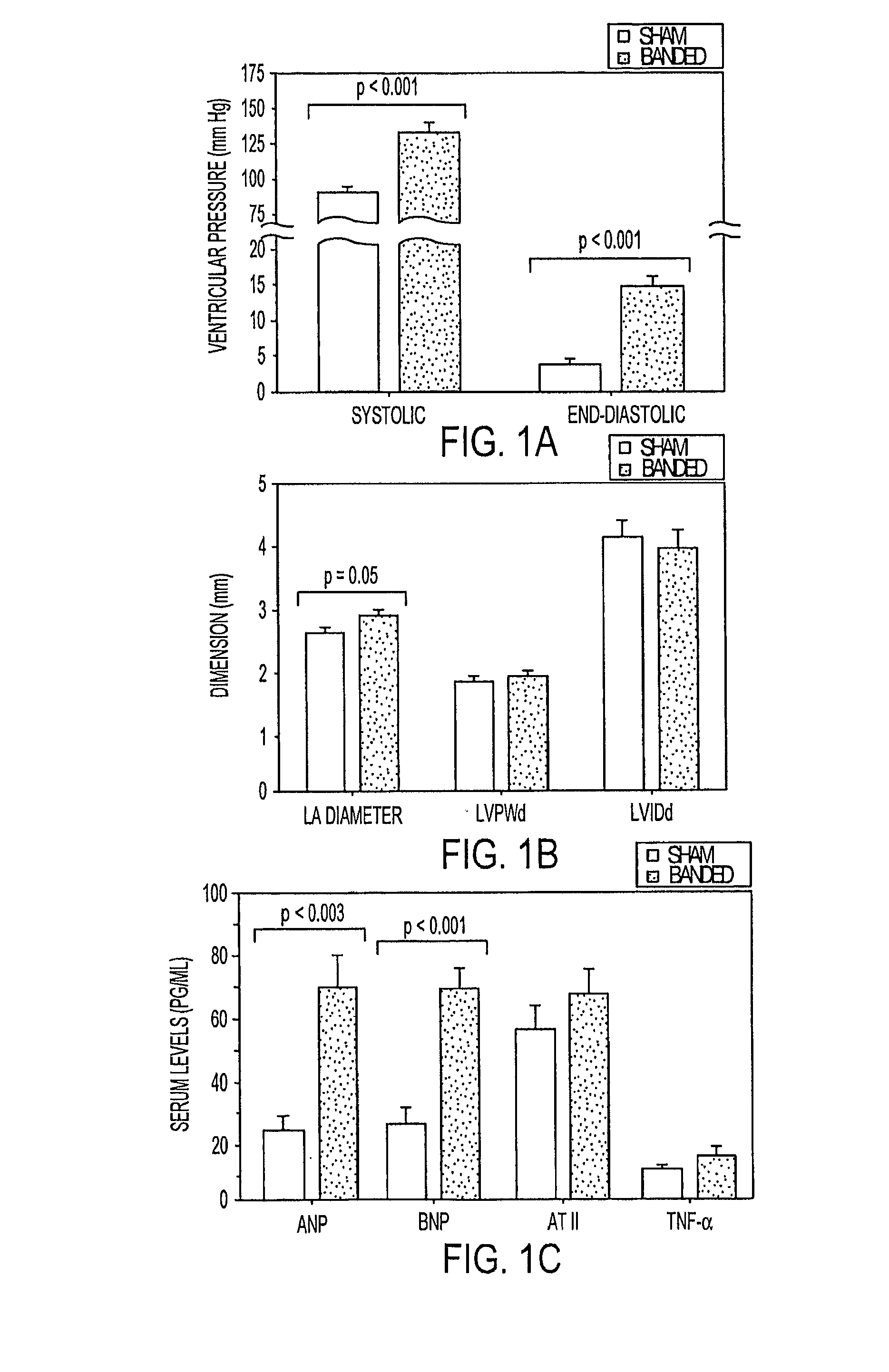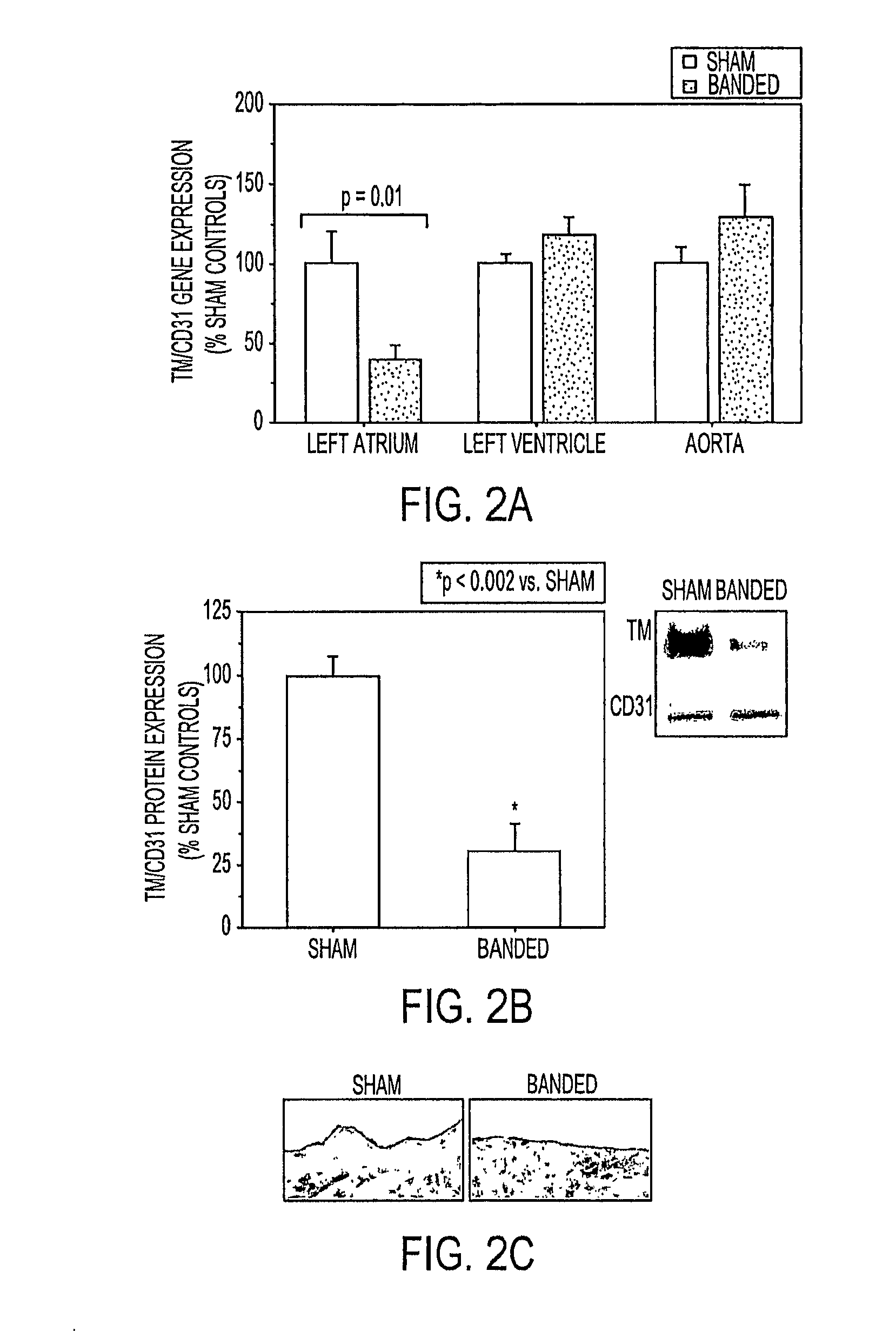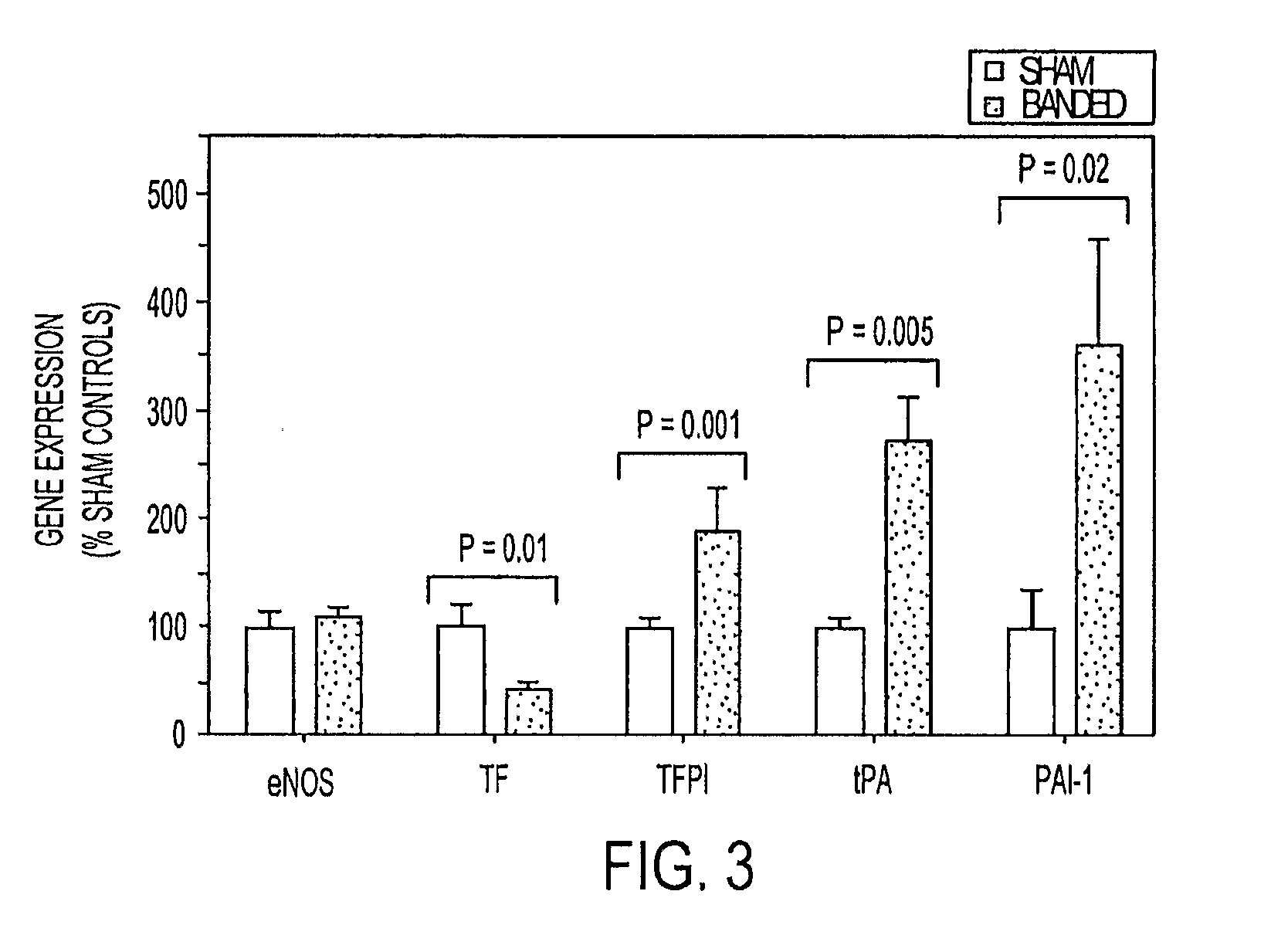Augmentation of endothelial thromboresistance
a technology of endothelial thrombosis and augmentation, which is applied in the field of endothelial cells, can solve the problems of inability to fully address the full extent of the problem, increase the risk of local thrombosis for vein graft failure, and increase the risk of thrombosis, so as to minimize pathological thromboses and reduce the risk or incidence of vein graft failur
- Summary
- Abstract
- Description
- Claims
- Application Information
AI Technical Summary
Benefits of technology
Problems solved by technology
Method used
Image
Examples
example 1
[0060]We hypothesized that pressure-induced chamber stretch might also negatively regulate endocardial TM expression and contribute to intracardiac thrombus formation during heart failure. To explore this, we characterized endocardial TM expression and function in a rat model of acute pressure overload. We then used adenovirus-mediated gene transfer to determine the relationship between thrombomodulin function and endocardial thromboresistance and identified an important role of paracrine effects of transforming growth factor-β (TGF-β) in regulating endocardial TM expression.
Methods
[0061]Rat model of pressure overload. Animal protocols were approved by the Johns Hopkins Animal Care and Use Committee. A well-characterized rat model was used with modification. 14 Six-week old, male Wistar rats weighing ˜100 g (Charles River Laboratories, Wilmington, Mass.) were anesthetized with 1-2% isoflurane and mechanically ventilated. Through a right thoracotomy, a 23 gauge needle was placed adja...
example 2
[0070]Effects of acute pressure overload on endocardial TM expression. The ascending aortae of 6 week old rats were suture banded to induce a >70% luminal constriction. Because this degree of acute increase in afterload results in pulmonary edema and death within 7 days of surgery, all hemodynamic and echocardiographic measurements were obtained 96 hours after banding. Compared to sham-operated controls, left ventricular systolic pressure increased 40% in banded animals while left ventricular diastolic pressure, equivalent to mean left atrial pressure, increased by nearly 400% (p17 Serum atrial natriuretic peptide and brain natriuretic peptide levels were >3-fold higher in banded rats, consistent with the induction of heart failure, whereas angiotensin II and tumor-necrosis factor-α levels did not differ from controls (FIG. 1C).
[0071]To determine the impact of acute hemodynamic changes on endocardial TM expression, tissue from the left atrium and ventricle of banded rats was subject...
example 3
[0073]Consequences of TM downregulation on endocardial thromboresistance. TM exerts its anticoagulant effect via activation of circulating protein C. Endocardial APC generating capacity was measured in resected whole left atria 96 hours after surgery. Aortic banding reduced the APC-generating capacity of the left atria of banded rats by >35% compared to sham controls (p=0.01; FIG. 4A). To determine the effect on in situ thrombin generation, the activity of thrombin bound to the atrial endocardial surface was then quantified. Thrombin generated at sites of vascular injury binds to fibrin strands within a developing clot and is protected from inactivation by circulating inhibitors. Bound thrombin activity is therefore proportional to the degree of thrombus that is present and is capable of detecting the presence of microscopic amounts of fibrin clot.12 Bound thrombin activity in the atria of banded rats was significantly higher than in atria from sham operated controls and approached ...
PUM
| Property | Measurement | Unit |
|---|---|---|
| pH | aaaaa | aaaaa |
| pore size | aaaaa | aaaaa |
| diameter | aaaaa | aaaaa |
Abstract
Description
Claims
Application Information
 Login to View More
Login to View More - R&D
- Intellectual Property
- Life Sciences
- Materials
- Tech Scout
- Unparalleled Data Quality
- Higher Quality Content
- 60% Fewer Hallucinations
Browse by: Latest US Patents, China's latest patents, Technical Efficacy Thesaurus, Application Domain, Technology Topic, Popular Technical Reports.
© 2025 PatSnap. All rights reserved.Legal|Privacy policy|Modern Slavery Act Transparency Statement|Sitemap|About US| Contact US: help@patsnap.com



